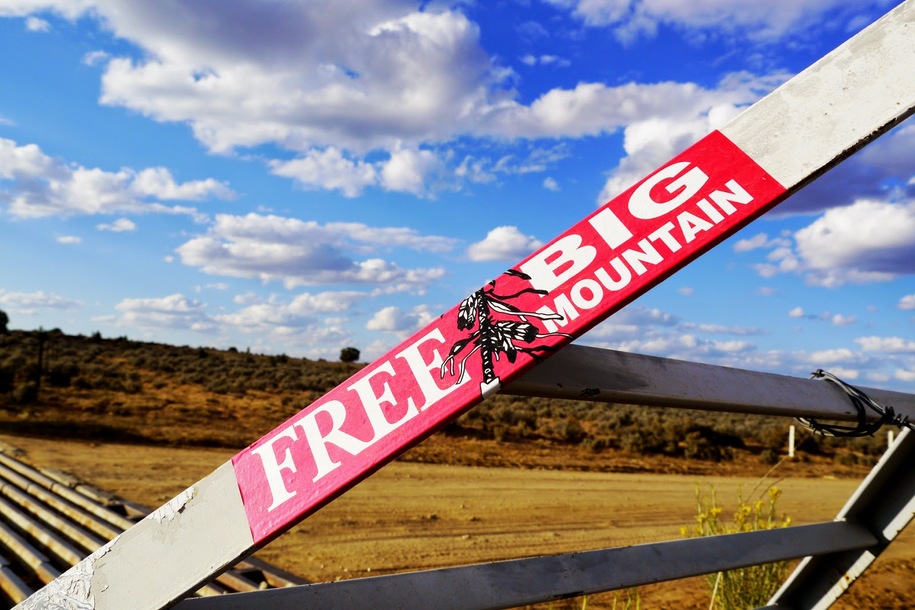
What might be “the largest forced removal of rural Americans since that of Japanese Americans during the Second World War?” It never is a good time to try to tell people about these issues; however, I had occasion this summer to meet a couple Navajo Elders from Big Mountain on the Navajo reservation, in which one specifically asked I not reveal their name or say that I had spoken with them. One elder, who was supposed to give my email address to someone else who was going to email me with a statement, did tell me, “We don’t get much press.” Consequentially, since that email never came, I decided to tell what three Navajo Elders and one non-elder told me here and now. I didn’t have a recorder or notepad, but here is what they all said at different times within the same general time, which correlated with what I already knew.
First, a non-elder said Peabody Coal Mine closed on Big Mountain, but the BIA (or people working for Peabody Coal) are still harassing the Navajo Elders. Furthermore, they said cattle are still being impounded. Why? The mine is closed.
(to clarify, video is from when mine was open)
Next, an elder told me about the status of the Bennett Freeze.
(bold mine)
When then-Bureau of Indian Affairs (BIA) Commissioner Robert L. Bennett enacted the Bennett Freeze in 1966, it was ostensibly to quell an ongoing land dispute between the Navajo and Hopi tribes after the Hopi Tribe sued to claim the acreage. Some Navajo residents of the area say there wasn’t a problem that warranted federal intervention. Don Yellowman, Navajo, who grew up in the area, believes the freeze was not an answer to the land dispute with the Hopis—but a divide-and-conquer tactic that would make it possible for outside industries to gain access to the land.
Although they hadn’t heard of the Bennett Freeze, they said it didn’t affect them on Big Mountain, “They’re in a different area.”
WINDOW ROCK, Ariz. — The Navajo Nation Council approved legislation that would provide $225,000 from the Unreserved, Undesignated Fund Balance to carry out a pilot project to construct 10 homes in the Former Bennett Freeze area.
The legislation would still need to be signed into law by Navajo Nation President Russell Begaye.
Legislation sponsor Council Delegate Tuchoney Slim, Jr. (Bodaway/Gap, Coppermine, K’ai’bii’tó, LeChee, Tonalea/Red Lake), along with the Tonalea Community Development Committee (TCDC) and representatives from the Tonalea Chapter, presented the proposal outlining a project that would begin housing construction in the former Bennett Freeze area.
“We have spent a lot of time planning on how we can get our leaders to begin helping with the former Bennett Freeze area,” Slim said. “It is our goal to bring our people back and change the life of the children in that area. For far too long, our people have suffered in that area and they have been waiting patiently for the Navajo Nation to help them.”
One particularly strong statement that an elder said was, “The ones in the city think they can speak for us and they can’t.” Another elder was extremely concerned when they said, “There aren’t that many of them (elders) left.” Think about it.
Once again, these statements came from three Navajo elders living on or near Big Mountain in three different conversations, and one non-elder. When and if the one elder’s relative emails me with a statement, I’ll provide that. Here is the most current article I could find on it, and afterwards are diaries I’ve written about it explaining it with more detail.
Native Sun News Today: Navajo elders continue long fight on disputed land
Dineh elders: ‘We are protesting on behalf of global society’
40-year-old Navajo battle is compared to DAPL standoff
By Talli Nauman
Native Sun News Today
Health & Environment Editor
nativesunnews.today
BIG MOUNTAIN, Ariz. –– Comparing themselves to the water protectors who defend the Missouri River from the Dakota Access Pipeline construction in Lakota Territory, relocation resisters recently observed their 40th anniversary here in Navajo-Hopi lands with a call for volunteers to help elders keep traditions alive.
“If you are experienced from other battle fields, like Standing Rock, North Dakota, and seeking to continue your learning and contribute to peace, this is one of the places – Big Mountain,” they said in a written missive.
“This 40-year Dineh experience may be equal and similar to the fight at Standing Rock,” they told the Native Sun News Today.
Located in the Four-Corners plateau of the U.S. Southwest, Big Mountain encompasses most of the northern portion of the so-called “Hopi Partitioned Lands,” an area in which a 1974 Presidential Executive Order called for forced eviction of traditional, non-English-speaking Navajo, or Dineh, under the Navajo-Hopi Relocation Act or Public Law 93-531.
Forced Navajo Relocation Continues on Big Mountain (Update)
Forced Navajo Relocation Victims Need Help (Update)
McCain & The Forced Navajo Relocation Law
America’s West Bank (Edited and New Info.)
Navajos Resist Forced Relocation (extra, I did not write this one)
In conclusion, one elder emphasized this was investigated by the United Nations.
These traditional resistors strongly believe that the sacred lands must be maintained in a natural order. The traditional Dineh are aware that Peabody Western Coal Company, which is currently mining nearly 80, 000 acres adjacent to Big Mountain, will expand further into these sacred lands once forcible removal is completed.
The IITC and the Dineh resisters remind the members of the Commission on Human Rights and NGO Delegates that this situation is, now, beyond crucial. The year 2001 can bring about a volatile state when the U.S. Attorney begins enforcing removal of individual traditional residents. In the words of one resister “We, the Sovereign Dineh resistors may politically be powerless but spiritually our focuses are adamant, and we will be prepared, again, to hopefully stop the U.S. government and its energy companies with their intentions to annihilate our ancient existence.”
This is why this might be “the largest forced removal of rural Americans since that of Japanese Americans during the Second World War.”
Mr. Amor, please bear in mind that this forced relocation of over 12,000 people whose ties to their customary use areas (that is, their land) have very strong religious, political, economic and psychological ties may well be the largest forced removal of rural Americans since that of Japanese Americans during the Second World War.
Paraphrasing Stalin, one forced relocation is a tragedy, but 12,000 is only a statistic. The UN also told us about: loss of voting rights; physically harassing elders; intimidation tactics; armed rangers visiting elders at their homes; stealing their property; and sacred sites being bulldozed – including graveyards.
This, has been America’s West Bank:
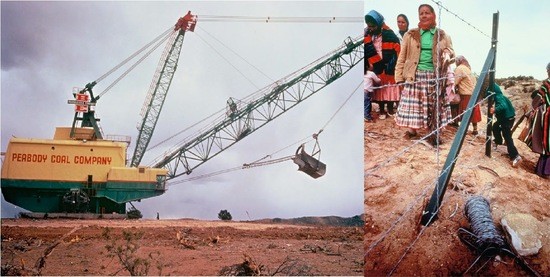
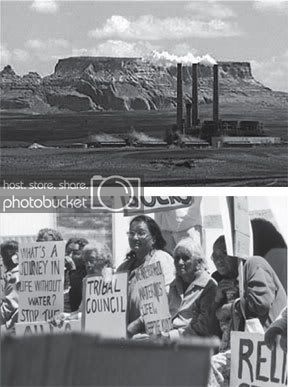
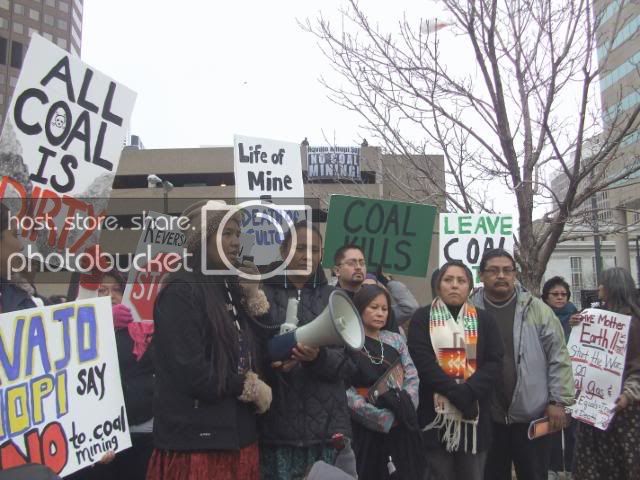
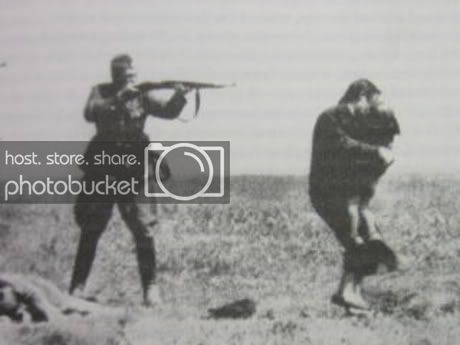

Leave a Reply